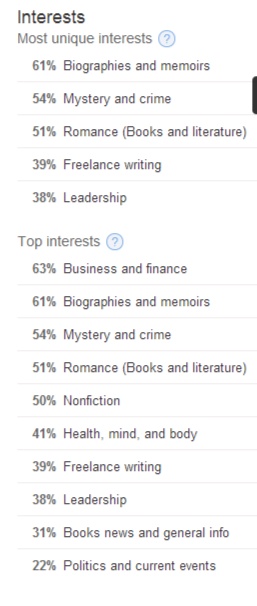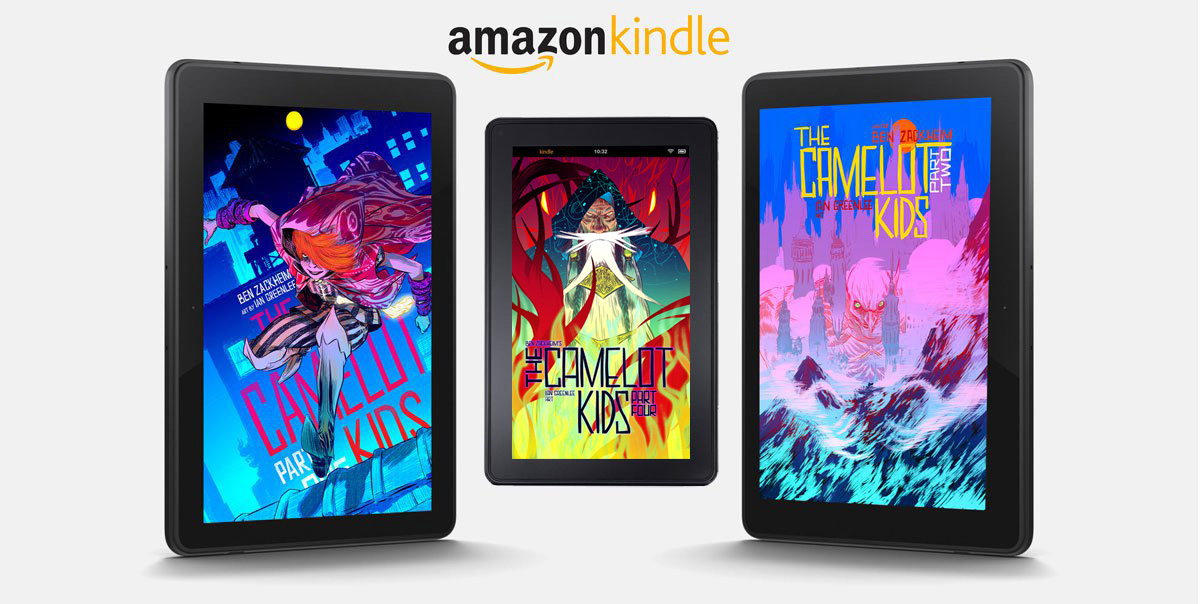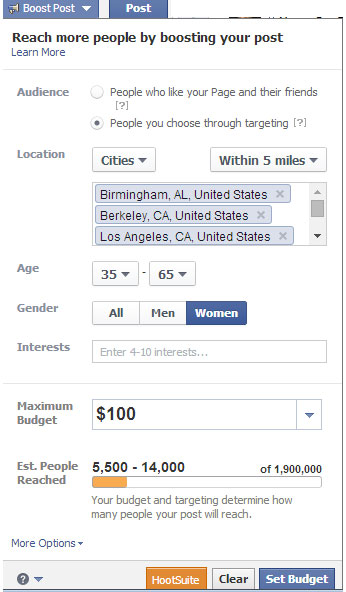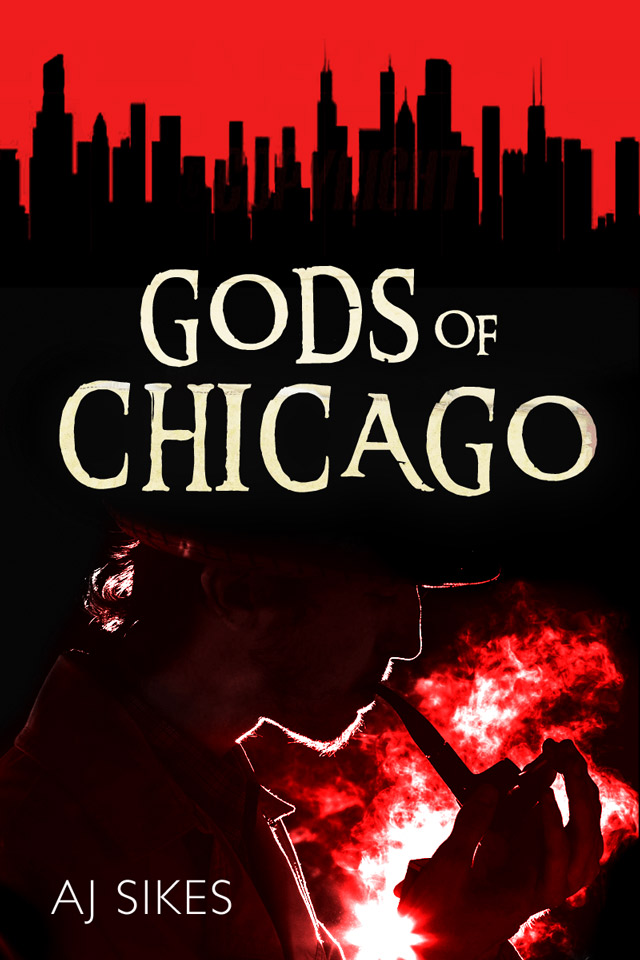
by Ben Zackheim | Apr 13, 2014 | Book Promotion, Sell your book, Writing |
We need to eat. Forget it.
We need to go pee. We won’t.
We need to sleep. Yeah, right.
Writers go from one discomfort and life-draining behavior to another when we work on our stories. But then comes the dreaded moment when we must write a book description.
Suddenly the pain is too much to bear.
Most of us choke. But why? Maybe we feel that explaining the book will make it sound so bad (to us) that we’ll question why we even began writing it in the first place?
The problem with such a bad habit is this.
The fourth most important step to sell books online is the book description.
Fourth, huh? How do I figure that?
1) Write a great (professionally edited) book.
2) Have a great cover.
3) Put a few glowing reviews directly above the…
wait for it…
4) Yup. The book description.
The reader will know they’re on to something special when they spot a cool cover and enthusiastic responses from real readers. But the book description is where you’ll either close the sale or lose them. That means you need to treat it with the same respect you showed your story.
I want to talk about some critical steps we can all take to craft the best possible book description. And at the end of the post I want to share a new idea I had. I’m trying it out now and I think you should too.
Why is a great book description important?
Let’s first define what I mean by a “great book description.”
A great book description will help you sell books.
That’s why it’s so important. So for this post we’ll be honing in on the actual sale like a (super-friendly!) sniper.
Be warned. Part of what I’m talking about is number-crunching. Part is craft. There may even be some art to it. But the goal here is to give you all the info you need to produce an effective book description that sells books.
So. Rubber, meet Road.
How to write a book description that sells books
Tip 1:
Get reviews before you launch your book. What do reviews have to do with a good book description? We’ll get to that in a sec.
Reviews should live right above your product description. Don’t rely on the retailer’s reviews section to sell books. They build their product pages to sell a variety of products, not just books. Book pages need testimonials in a clear and obvious place — just like the back cover and flaps of real books.

Tip 2:
Using the reviews, craft your description. Show the potential buyer just how right the reviewers are! Act as a mirror to a couple of the key terms/phrases that your reviews use. If a review calls your book “an enlightening romp through one man’s middle life” then you can verify that in the book description by using words like “enlighten” and “middle life.” It’s a great way to subtly say, “That reviewer is so right!”
Tip 3:
The first sentence should be as good as your book’s first sentence. Remember how you pounded on the first sentence of your book until it was just right? Do that with your description too.
Tip 4:
Use terms that the online retailer’s search engine will love. Yes, we’re getting into uncomfortable territory here. Where’s the art in all of this, Ben? That’s up to you to find. But I’m obligated to tell you that Amazon scans your book description for terms that help its search engine find your product.
So be sure to include terms that reflect the genre you’ll be placing the book in. If your book is the story of a reporter investigating the death of her cousin at the hand of a serial killer at the start of World War II, then be sure you include terms like investigative journalism, World War II and serial killer in your description.
By the way, that’s my mom’s book, The Last Train to Paris. Go Mom!
There’s a cool way to check on what terms Amazon readers like to search for. Just use Amazon search! Enter a term that applies to your book. You’ll see a whole bunch of suggestions. Amazon is essentially telling you that these terms are what their readers are searching for. Use that to your advantage and find a word or term that’s a good fit. Choose a couple and put them in your book description.

So I should advise my mother to include the terms World War 2 historical fiction in her description. It’s appropriate to her book and it ranks high when people begin to type “Word War 2”. Of course, being my mother, she will ignore my advice.
Tip 5:
Target the shopper, not the reader.
Aren’t they the same? Probably, but not necessarily. I learned as a writer of books for young people that the book description must appeal to the adult who’s buying the book. Not the kid who’ll read it. A cousin of mine, Nerissa Nields, wrote a book that has “gift” written all over it, titled How to be an Adult. Yeah college graduates’ parents might want to jump on that one.
Tip 6:
Test! Post the description to your favorite online hangouts and ask for feedback. Send an email to trusted resources. Yes, that includes family and friends, as long as they have a good track record for giving constructive criticism.
I’ve found the community for BookGoodies on Facebook and the Createspace forums to be packed with people who love to give useful feedback.
If you’ve read this far then you might want me to cut to the chase and just get to this “new idea” I mentioned earlier.
Here it is…
Tip 7:
Don’t write an excellent book description. Write two excellent book descriptions.
Why?
The first will be for your launch audience. The second will be for the long-run.
What’s a launch audience? It’s the audience you know you have access to from the get-go. It can include your email list, your Facebook followers, etc. Did you read my post about Twitter analytics that help you identify your target audience? In a nutshell you can use Twitter to find out the specific interests of your followers. If you can identify specific interests of your followers then you can use words and terms that resonate with them.

Yup. That’s a breakdown of my Twitter follower’s interests.
Go read the post. It lays out just how incredible this data is. It’s key to our never-ending quest to reach people who might be interested in our books. I wish Facebook offered the same robust insights, but they took the opportunity to charge us for targeted marketing.
Tip 8:
Tweak! Never stop adjusting the book description of your books. The beautiful thing about self publishing is that it allows you to make fast adjustments based on good data. If your book is suddenly newsworthy because of world events, then by all means head in and edit it! If a new term starts catching on that applies to your book, use it! You get the idea.
Conclusion:
A book description isn’t some alchemical element that could blow up in your face if you call forth the wrong incantation. It also won’t work if you just write, “Me book be gooder than your thinking it could of!” Find a process that works for you. Use your talent to write and use your curiosity about your audience to dig into what will make them more likely to click the Buy button.
By Ben Zackheim
Note: This post contains two affiliate links (in Tips 4 and 5), both of which are links to books on Amazon. One book is by my cousin, the other book is my mother’s. They’d better be fine with this, or Thanksgiving is going to be very uncomfortable this year.
[divider divider_type=”gradient”][/divider]
You might also like:
Amazon has a bridge to sell ya!
The $1.1 Million question: Is KDP Select worth it?

by Ben Zackheim | Apr 8, 2014 | Book Promotion, Digital Identity, Sell your book, Shirley Link & The Treasure Chest, Writing |
You hear the one about the two authors who walk into a bar? One has a mailing list. The other one has zip. Nada.
Mailing List: “I saw that tweet about your book sale the other day.”
Zip Nada: “Yeah. I got two whole sales after a week of prep, a $50 ad spend on Goodreads and 28 tweets.”
Mailing List: “Wow. That sucks.”
Zip Nada: “Thanks. That’s really helpful. I got your newsletter about your book last month. Looked nice.”
Mailing List: “50 copies sold. Not too bad. Why don’t you use your email list to promote sales?”
Zip Nada: “I don’t have one.”
Mailing List: “Oh man! It took me seven years to build mine! You’d better get started, like yesterday!”
What’s the punchline of the joke? Zip Nada punches Mailing List in the face.
If a writer doesn’t have an email list, does he make a sound when he falls in the forest?
Many writers experience dismal sales from Twitter/Facebook/[enter social network name here]. A common complaint is, “My followers are family, friends or fellow writers who don’t buy other writer’s books.”
We’re told that we should have an email list. That way we can reach the highest quality, most targeted audience possible.
Uh. I’m afraid all the above is true.
But…
Here’s some great (and little-discussed) news. If you use Twitter then you can reach your target audience. No matter what the “quality” is of your followers!
How?
Twitter Analytics, is a spectacular tool for finding people to buy your book.
You could say, “but that assumes my social network followers care about my books and they demonstrably do not.” This is a big misconception,and probably one of the most damaging to authors who blog, tweet and share online. We’re told by a lot of smart people out there that people who follow us, Like our posts or share our tweets aren’t necessarily fans, or even readers.
That’s a glass half empty (and incomplete) perspective.
Here’s mine:
The Twitter connections we’ve made online with non-fans and even non-readers are valuable enough to sell books.
How can that be? Because Twitter has learned so much about them!
Here’s what I mean. This is a breakdown of my Twitter following.

Is that a marketer’s ten thousand dollar breakdown of potential audience?
No, it’s Twitter’s free report on my followers.
Yup. They actually tell me what interests my followers have, even broken down by favorite genres! So for all my Twitter struggles and misses and successes over the years, in the final analysis it was my mere presence that gave Twitter the data it needed to say, “Hey, good job reaching out. Here’s who you have. Now go have fun selling your book to them!”
How does this help you? If you look at your own follower breakdown you’ll spot interests and terms that you can tweet about. For instance, using the data above, I just brainstormed a new tweet that I’m going to try:
Tweet: How do teenagers learn #leadership skills? Shirley gets crash course in #mystery Shirley Link & The Treasure Chest http://ctt.ec/n4z2o+
In that book, my heroine (Shirley Link) gets a lesson in leadership when she tries to get her two best (and bickering) friends to work together. All while dragging her dad around so he can help with the case.
So I’ve used two terms that I know (from solid Twitter data) will resonate with a huge part of my Twitter following: “mystery” and “leadership”.
But it doesn’t end there. You could apply this data to find terms for your book description, your book metadata and even blog posts about your book. Then when your audience clicks on the tweet they’ll see their favorite subject brought up again and again as they decide if they want to buy or not.
Conclusion: Get signed up for Twitter Analytics to find your target audience
So the lesson here is, you might not have a big enough mailing list yet. But as you build that up, don’t fret. Use Twitter and some common sense and you’ll find your readers.
Sign up for Twitter analytics here.
by Ben Zackheim
If you liked this post, give these a try!
WordPress for authors and writers (part four)
WordPress for authors and writers (part three)
WordPress for authors and writers (part two)
WordPress for authors and writers (part one)
Top 5 writing contests

by Ben Zackheim | Feb 19, 2014 | Book Promotion, Writing |
A step-by-step guide, with best practices!
Yup. Blog posts about Amazon KDP Select free promo days are as common as bad drivers on I84.
But I want to do something a little different here. I want to lay out steps and include details about why they are important. I’ll also give you a basic overview of boosting posts on Facebook. These days it’s best to spend five bucks to get the word out.
Once you sign up for KDP Select and figure out what you can do with your exclusive Amazon ebook, you may find a small bump in the road. Actually it may look more like a big, honking wall. The wall is spray painted with large words…
“Now what?”
Here’s what.
1) Decide why you’re doing the KDP Select free promotion days. Don’t just do it to see what happens. I can tell you what happens. Lots of people download your book and add it to their vast library. That plus $17 will buy you a coffee.
Here are some great reasons to do a free giveaway that will actually add some momentum to your efforts:
-
You want the reader to buy the next book in the series. Provide a sample of the next book in the back of the book you’ll be promoting. Provide a link to buy the next book too. If you haven’t done this already, it’s a good idea.
-
You want the reader to buy another book you wrote that is not in the series. Same as above.
-
You want newsletter sign-ups. Definitely recommended if you don’t have any other books available to buy, because this way you minimize the risk of losing them before your next book comes out. People forget things. Even authors they enjoy.
-
You want reviews. Make a level-headed case at the back of the book for writing a review. I lifted my copy from David Gaughran:
“Word-of-mouth is crucial for any author to succeed. If you enjoyed the book, please leave a review on Amazon. Even if it’s just a sentence or two. It would make all the difference and would be very much appreciated: [link to book on Amazon]”
For your first promo I don’t believe you should shoot for more than one of the above goals. Why? It’s hard enough to track progress on one front, much less several. You can always adjust your tactics for the next free promo.
Once you’ve chosen your general goal, choose a specific one. Are you going for sales of the next book in the series? Great! How many do you want to sell? Just guess. Set a goal and be ready for failure or success. Both can be daunting, but it’s essential to measuring the success of your effort.
2) Decide how many days you want the free promo to run. I suggest a minimum of two. This way you can spot whether downloads are accelerating over a substantial period of time (implying a hunger for your book and/or wise choices on the marketing front) or not (implying you’ve missed the mark on marketing).
My opinion is that five days is too long. Especially if this is your only book. Why is that? Because free promo days are a great way to get people to give you a try. If you don’t have another book to sell them then you’ve lost them.
Also, five days is too long because you don’t want everyone who WOULD download your book to see it and download it. You want to leave some room for word of mouth to set in. The longer you keep the book free, the more likely you are to exhaust your potential audience in one go. Now, if you want to just get maximum exposure then five days is an option. Just don’t expect too many sales after the five days is over. You’ve gotten on their Kindle, and now you have to hope they convert to other books in the series or other titles you’ve written.
3) Buy one guaranteed spot. If you can avoid it, do not choose a date for the promo days first. Please. Choosing the date first means you’re setting something in stone before you know the availability of your marketing options (i.e. Bookbub, Bookgoodies, etc.)
So first, choose one of these sites to buy a guaranteed spot.
Bookbub
Booksends (formerly Bookblast)
Free Kindle Books and Tips
BookGoodies
AskDavid
Manybooks
These are the top-notch options for your free day advertising. Choose one, secure a date, and then choose more from this category if you can afford it, and if they can accommodate your dates. Bookbub is tough to get on. They may turn down your money. But one or two of these sites will be happy to take that heavy dough off your hands. I’ve had an especially impressive result from Manybooks. Shirley Link & The Safe Case hit the top 500 Free list on Amazon and it took four days to settle down. Highly recommended.
4) Make a list of friends you can count on to share and bug ’em. Prep an email to them. You’ll send it out a day or two before the promo.
Dear friends!
I apologize for the group email but I want to reach as many people as possible for this. I’ll be giving my ebook [book name] away for FREE on [date]! Why free? It’s a limited time deal on Amazon that will expand my readership and give me a chance to find some new fans.
I could use your help on the promo day. Please keep an eye on [Facebook, Twitter]. When you see my announcement, please Like and Share. The sharing part is important since it will help more people see the deal.
That’s it! I appreciate any help you can provide to get the word out. I’ll let you know how it goes!
Sincerely,
5) Tell the following sites about your KDP Select free promotion days. Be sure to track who you’ve told in your app of choice. I use my Google Docs marketing journal (which I’ll write about one day)
Best websites for marketing your Amazon KDP Select free days
You can also use the Author Marketing Club tool to submit. The tool is a little wonky but it works.
6) Now head in and set your free days on Amazon’s KDP Select site.
7) Now go to your social networks of choice.
Twitter. If you have a Twitter Ads account then you can schedule tweets to go out whenever you want. If you don’t have a Twitter Ads account, it’s worth it. It’s free and gives you incredible stats and some useful features. Sign up for Twitter Ads here. (it’s a Twitter-owned service) Some people use Hootsuite or Buffer to queue up their tweets for later. Both are excellent options. Set up seven tweets per day of your promo. Don’t make them all sales pitches. Make them intriguing.
-
Write a riddle.
-
Include an excerpt.
-
Ask a compelling question that your book answers (fiction or non-fiction).
-
Include pics (cover, interiors).
-
Include vids.
-
Include every media you have for your book!
I recommend you buy some ads on Twitter Ads to get the word out. But wait until the next promo. For your first promo, give Facebook some hard-earned cash. They’re getting good at delivering readers to me.
Facebook. Do two posts for each day of the promo. Again, set these posts up ahead of time. You should consider boosting your posts with a $5 spend. It increases awareness of your promo. Just make sure you target correctly and set the post date for the promo date. How do you do that? It’s easy.
Draft your post (please include an image of the book cover to make the post appear nice).
Then click on the Boost Post button at the bottom of the post window.

Notice the elegant layout. Amazing how Facebook can make great interfaces when money’s involved, huh?
NOTE: Facebook changes their design all the time. The boosting process will always be similar, though.
Just select “People you choose through targeting” to get the range of options you’ll need. Then fill out information that you think appeals to your target audience. The Interests window is especially important. Put words in there that relate to your genre and book. So if you wrote a book inspired by “It” you could enter “horror, stephen king, violent, scary clowns, it.” Yes, you can get as specific as you’d like. The more specific, the better. With these data in place a whole slew of people who are interested in King, It, and scary clowns will get your ad served to their page.
Some people don’t get great results with Boosts and prefer running Facebook ads. These show up as promoted posts in the feeds of people who you target. The process of setting up an ad is more complex, but you can get the lowdown on how to do it here. If you want to take a course in Facebook ads, sign up for this course.
Pinterest. Post your cover art, interior art and marketing images. The copy should tout the free promo days.
7.1) Add a keyword. Thanks to Julia Derek in the comments section, you get this excellent tip. A couple of days before the promo, head into KDP and add the term “free ebook” to the book’s keywords. It will take several hours to a couple of days to go live. This should help people find you if they’re looking for free ebooks. Don’t forget to remove the keyword term after the promo is over, though.
8) On the first morning of your KDP Select free promotion days, monitor! Go to your marketing journal and see which sites you informed of the free days. Did they post the promo? Not all of them will. Be aware that some sites will post at the end of your day (it’s a big world!) Take note of which ones posted. You’ll want to have that list handy for the next promo.
Go to the site(s) where you paid for promotion and make sure you got what you paid for.
Post the deal to these promotional sites. They only accept additions on the day of the promo.
Addicted to eBooks
Snicks List
Send out an email to your friends, reminding them and offering some new details/news that will make the email worth a read.
Hi all!
As I mentioned, my ebook is free for today on Amazon! Please share the post on your timeline. If you don’t see it, here’s the url.
[insert url for shared post, tweet, etc.]
Thanks so much! I checked my dashboard and have [number] downloads so far. So excited.
Sincerely,
If you’re happy with the results you can post about your success on social networks. It might be nice to send a final email with the good news if you feel like that’s a good idea.
And, of course, head to Amazon KDP to check on the progress. Watch the downloads roll in! It’s fun. Don’t forget to eat.
9) If downloads accelerate on day two, consider adding another day to your promo. Increased interest in your book over a 48 hour period may be a sign that you’ve broken through to a larger audience than your genre warrants. In other words you may have broken into Amazon’s “mainstream” a little bit. If this happens then adding a day will allow for you to capture a much wider audience. Ideally, you’ll go back to charging for the book right when the interest peaks. This way you’ll pick up sales from people who were interested enough to pay for your book.
10) Was it a success? You should keep promoting for a few days after the promo is over. Tout your rise in the rankings, new reviews or whatever stands out as a positive result. But also evaluate the performance of your campaign. Remember how you set a specific goal for your promo? Did you meet it? Exceed it? Give the readers a couple of weeks to show their intent. It takes a while to read a book for some of us!
Take a realistic look at your results. Gauge what went right and wrong with the promo (you will see what worked and what failed). Write these down. Don’t assume you’ll remember because you might not, which means you learned nothing. With all this data, draft a plan for the next promo. And congratulations! You’re on the road to getting much better and being more comfy with marketing! No small task, friends.
Let me know how your promo goes.
[jetpack_subscription_form]
You may also like:
Amazon has a bridge to sell ya!
The $1.1 Million question: Is KDP Select worth it?
by Ben Zackheim

by Ben Zackheim | Feb 11, 2014 | Writing |
Ever thought about serializing your novel, or writing a serial from scratch? Yeah, me too. I’d like to welcome AJ Sikes to the blog with his post on serialization.
Enjoy, and please let us know your take on serialized stories.
Here’s Mr. Sikes!
Hello Everyone!

Many thanks, first of all, to Ben for offering a guest spot on his blog. This marks the second post of my tour promoting Gods of Chicago, a noir urban fantasy that was released in serial format and will soon be available in omnibus and POD editions (release date Feb. 14th!) My first post on this tour was at Zoë Markham’s blog where I talked about the decision to go serial.
Getting down to brass tacks, Ben thought my experience in writing and publishing a serial would be of interest and help to his readers, hence the title of this post. A bit of what I’ll say here is an echo of comments I made on his blog last Monday. But I also share some thoughts on how the serial process can help newer writers test the waters, and especially as regards independent publishing (self and small press).
Lesson One: Write the whole story first.
1. You can put just the first episode out or launch episode 1 and 2 simultaneously, which is what I did. This lets readers get a taste of your writing on the cheap (each episode is just $0.99), and without too much investment of time (each episode comes in at around 15K-20K words, a good read-before-the-lights-go-off chunk of story). Isn’t the point of a serial that it be written in segments? Well, yes. Back when Dickens was doing it, that is how it worked. Edgar Rice Burroughs’ experience with serialization is closer to what I did with Gods of Chicago. Having a full novel ready to go before launching a serial provides a two-fold benefit.
⁃ Based on feedback from your early readers, you may find you need to put the episodes out more quickly than you’d planned.
⁃ Also, serial stories aren’t all the rage these days (though they’re gaining popularity). Readers seem more comfortable getting a story all in one go. For my future efforts, I’ll be doing the full season release, which is what other serial authors seem to be doing now.
2. With the full novel in hand, you lighten the workload when publishing. You’ll tackle all the formatting at once, if you’re doing it yourself. If you’re using a professional formatting service (highly recommended!), they’ll appreciate getting the entire project in one delivery.
⁃ Come publication time, you’ll appreciate having all your ducks in a row.
I had the benefit of working with a publisher who handled cover design, formatting, and uploading of each episode. If you can secure such an arrangement, you should. Unless you’re the kind of person who has access to and can use all the software necessary.
One caveat here: Be wary of sites offering “assisted self-publishing” as these may, in fact, be vanity presses in sheep’s clothing. If you’re paying a publisher for a service, and that publisher is also asking for rights and a share of the royalties, you may want to reconsider signing the contract. Writer Beware is a great resource for new writers looking to avoid pitfalls in publishing. The site is maintained and geared toward the genre fiction community, but writers of any stripe can benefit from a quick read through the archives.

Lesson Two: Invent a time machine so you can read Ben’s blog on KDP Select before you publish
Seriously. ICYMI, Ben did a fantastic two-part blog on the benefits to be had by signing up with Amazon’s KDPS program. Part 2 is here.
I’m a big fan of the transparency among members in the independent author community. Hugh Howey and Joe Konrath in particular have been incredible about sharing the behind-the-scenes details that most authors could only hope to guess at. Even as recently as two years ago. So, I’m happy to share what I’ve learned through my sales, meager though they are.
Kindle users account for the majority of my sales. Month of January sales total 18, split evenly between Amazon.com and Amazon.co.uk, with only episodes 1-3 purchased. Month of February sales total 6 so far, solely from the UK site, with one sale of each episode 1-5.
I’ve sold a total of 3 copies through Kobo. Zilch on B&N and iTunes.
Now, a lot (all) of these abysmally low figures are due to my lack of a significant marketing push, which was, to some extent, intentional. I made announcements in the forums and Goodreads groups I frequent. I talked to potential readers, and I made some noise on Twitter (and thanked every last person who helped boost my signal). But I didn’t advertise or try to flood the airwaves with news about my book.
The goal with the serial was to attract a few early readers and begin building another piece on the platform around my book. I’ve been active online and within the writing community for about two years. I’ve got a personal website for my editing services, which includes a page devoted to my writing. So my efforts at building an author’s platform weren’t restricted to the serial release, and that’s an important point for new authors to consider. It’s what we hear so often…the real work begins after the book is published.
Contrasted with the serial release, for the omnibus/POD release I’m tracking down advertising channels, doing a blog tour (Thanks again, Ben and Zoë!), and plan to use Amazon’s machine to do a lot of the marketing for me through KDPS. I also expect to have monthly deals to plan for, and special promotions to run.
That’s a wrap here. I’m lining up stops on the tour through the month. If any writer- readers would like to host me, I’ll happily provide an edit of your first chapter (up to 5K words) in exchange. The only date I have set is February 24th, where I’ll talk about self-editing tips over at mystery writer Elizabeth Spann Craig’s blog.
If any readers have experience with serial publishing, what did you learn?
BIO:
Aaron Sikes (writing as AJ Sikes) is a writer of weird noir fiction and a freelance editor serving the community of independent authors. His stories have been published by Xchyler Publishing, KnightWatch Press, and Fox Spirit Books. Follow him @SikesAaron and sign up for the Gods of Chicago newsletter to get the latest updates on Mitchell Brand’s adventures and story world extras. If you need editing assistance with your manuscript, please stop by his website.
You might like these posts:
WordPress for writers and authors
Top 5 writing contests
Why you should run a Goodreads contest

by Ben Zackheim | May 16, 2013 | Book Promotion, Shirley Link & The Treasure Chest |
Shirley Link & The Treasure Chest, the third book in my Middle-Grade Mystery series, is out.
But the real good news is that today and tomorrow it is
FRREEEEEeeeeeee
eeeeeeeeeee
….
So go to Amazon and download your own copy. If you like it, give Shirley a review! And spread the word.
Shirley Link & The Treasure Chest clocks in at twice the size of the two previous books. I wanted to dig into the three teen characters some more, and reveal why they are such a great team. Shirley, Wylie and Marie are like the perfect storm. Between them, their loyalty, intellect, strength, bravery and faith in each other makes them the best sleuthing team of all time.
I look forward to writing more about them in the years to come.
Next up in the series is Shirley Link & The Black Cat. It should be a doozy.
Look for it this summer!
From Amazon (Shirley Link & The Treasure Chest):
Shirley Link loves pirates. Well, she loves the idea of them. She wouldn’t like them if they were running up the street stealing bikes, but digging for treasure and swashbuckling adventure are on the top of her to-do list. So when a clue pops up that there’s a hidden pirate treasure under her hometown, Shirley gets to work.
In Shirley Link & The Treasure Chest, the third volume in the critically-acclaimed Middle-Grade Mystery series, our heroine takes on her toughest challenge yet. But this time the stakes are bigger than ever. If she fails to find the treasure, or if it ends up being a hoax, then Shirley’s elderly neighbor, Mrs. Smiley, will lose her home to the bank.
More Shirley, Dad, Wiley and Marie than ever before. That’s right. Even Mr. Link gets to join in the adventure!
Reviews:
Emily Neuburger, Everyday Fun blog, Parents.com
“Shirley Link is a new girl detective series that my daughter is crazy about. This is an amazing series, my friends! Your kids will be hooked and you’ll feel really good about it.”
Edward Hemingway, Author/Illustrator, Bad Apple
“This Virginia Mars for the tween-set is funny, smart, and full of preternatural wisdom.”
PopBop (Top 1000 Amazon reviewer)
“There are early middle grade mysteries out there, but most of them have sketchy characters, and a lot of them plod along fairly predictable arcs. This series has an engaging heroine, a lot of attitude, and a much snappier overall feel.”










